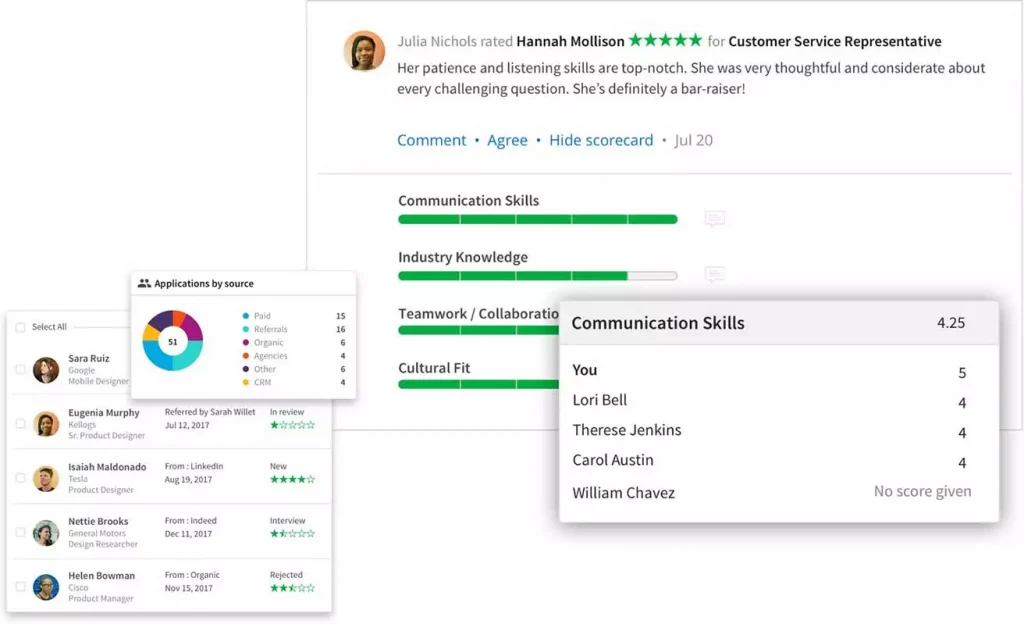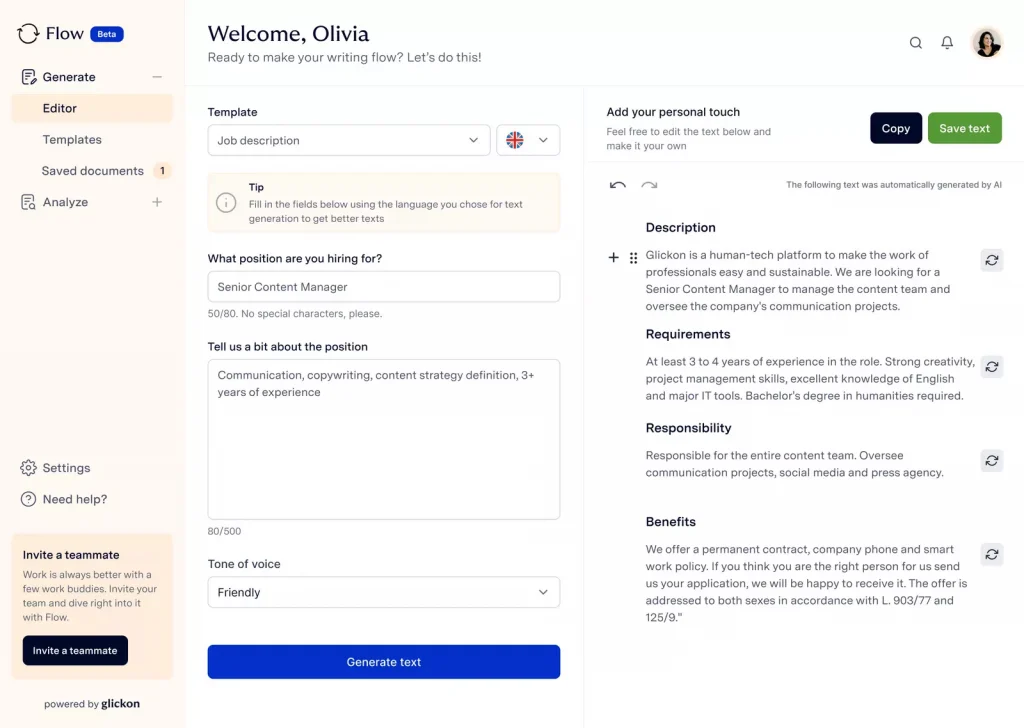Articles & Guides
A guide to Digital Transformation for Human Resources: stages, tools and new skills
In a nutshell
Follow the inevitable Digital HR Transformation through its stages, goals and prerogatives (including a new kind of manager). Find out more about People Analytics, communication strategies and evolution of workspaces. The future is digital, will your people be too?


Don’t have time to read it all?
Here’s a brief summary of the key points in this guide.
How has HR changed with the rise of Digital?
The role of Human Resources is more complex today than ever before:
- • The keyword is “proximity”, meant as emotional and value contact
- • New organizational models
- • Innovative professional figures use IT tools to redesign the employee experience
HR leaders need to:
- • Be flexible and responsive to the changing needs of employees
- • Strengthen corporate culture
- • Reduce the burden of information handled directly by employees
- • Increase productivity
- • Modify and digitalize the process of selecting, training and motivating people
[DIVE IN]
What drives Digital Transformation in Human Resources?
An organization cannot go from being barely digital to being fully digital overnight. These are changes that take time, money, resources, and a mindset change.
It is possible to generally identify 6 stages in the journey toward digitalization of the Human Resources department:
- 1) “Business as Usual“ (Leadership does not see digitalization as a necessary change)
- 2) Active Presence (Various experiments begin)
- 3) Formalization (The moment the real Digital Transformation begins)
- 4) Strategy (Individuals are now strengthened through collaboration)
- 5) Convergence (A dedicated Digital Transformation team is formed)
- 6) Innovation and adaptation (Digital is now part of the company’s DNA)
[DIVE IN]
What are the new digital skills to develop in the era of Digital Transformation?
HR managers leverage new digital solutions to optimize the experience and strengthen the skills of employees. They must combine management skills with tech and digital knowledge, global mindset and strategic vision. And they can rely on a number of recognizable skills:
- • Excellent communication-relational ability
- • Strong problem solving skills
- • Implementation of digital methodologies related to recruiting, training, performance, organization, and internal communication
- • Knowledge of the regulatory framework governing business processes
- • Mastery of agile work tools and methods
- • Possession of lateral thinking and visual thinking
- • Ability to use UX Design and HR Analytics tools
[DIVE IN]
What are the new challenges and opportunities for the HR staff?
The combination of fully remote, partially remote, and office-based work positions will lead to a profound redesign of organizational structures. HR professionals will have to
- • Sustain the search for the right sharing tools and give support to reorganizational decisions
- • Revise their processes by making them more fluid, inclusive and digital
- • Help managers move away from that outdated mindset based on presence
- • Foster the synergy between technology and humanity
[DIVE IN]
LEARN TO RIDE
Ready to surf the digital wave and become a leader in your industry? Join Execute.Club, where executives and managers like you can access resources, connect with peers, and get the no-nonsense help you need to succeed in the digital era.
Enter the ClubIntroduction
Digital Transformation can generate revenue, provide stability, and make a company future-proof. It has gone from being a new thing to becoming a real approach to business, and now involves every aspect of business life, including Human Resources. HR is deeply affected by the Digital Transformation: thus, the need to redesign the organization and its processes emerges, supported by new practices and cultural models, under the banner of accountability, individual autonomy, and distributed leadership.
An introduction to Digital Transformation for Human Resources
The pandemic that has struck the entire world has changed our habits dramatically. It has not spared working life either: now more than ever the need to adapt to change and be agile is becoming evident. This is a reminder to all companies that wish not only to stay afloat, but also to maintain a competitive advantage over competitors. Concepts such as digitalization, machine learning and data analytics are by no means of recent creation, yet they still struggle to be embraced in business realities.
Change seems to be seen as a leap into the void that few have the courage to tackle. Yet, as explained in the Digital Transformation guide, refusing to adapt is nothing more than a guarantee of failure. Think of the cases of Blockbuster or Kodak, which, unable to align their strategies with market demands, preferred to rest on brand reputation.
Human Resources: a very brief evolutionary explanation
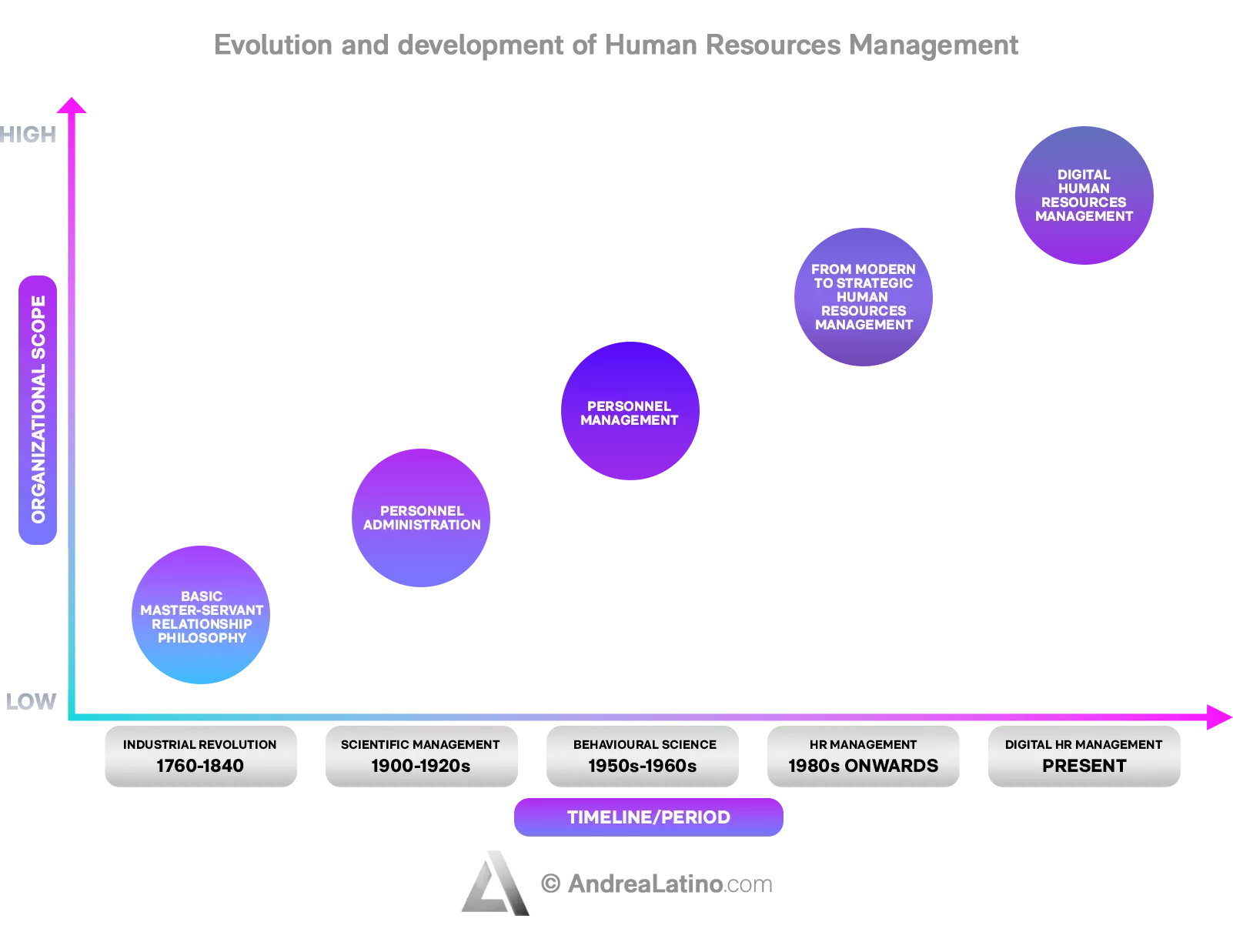
Although the term “Human Resources” began to circulate during the first industrial revolution (we are talking about the very distant years between 1760 and 1840), actual personnel management departments did not become widespread until the first half of the 20th century.
A more modern conception began to make its way in the 1960s to indicate the overcoming of the scientific organization of work: the employee was no longer seen as a mere instrumental asset but became a key resource to contribute to the success of the business. That is, a resource to be “cultivated” and trained during his or her employment.
DOWNLOADABLE FILES
- Digital HR Transformation Canvas – Download now!
But business dynamics change following an inconstant, nonlinear pattern, and so the same function that deals with people within organizations changes shape and approach according to social, technological and business transformations. The advent of Digital Transformation has forced those responsible for choosing human capital to supplement their knowledge with digital skills, adapting to the new contemporary scenario.
An overview of Digital HR
What is Digital Human Resources?
The role of Human Resources is more complex today than ever before. Many companies have undoubtedly found themselves disoriented by the need to speed up organizational virtualization. And HR finds itself creating new situations in which to incubate business ideas but also social practices that know how to cross technology with instances for “easing” the work-life balance. The key word is more than ever “proximity”, but not meant as physical proximity (we will talk, later, about smart working and hybrid work), but rather as emotional and value contact.
Digital HR, in short, is today’s evolution of the Human Resources department fostered by Digital Transformation: a department composed of new organizational models and innovative professional figures who use IT tools to redesign the employee experience. They are dissolving the inextricable link between Human Resources and administrative and bureaucratic procedures. HR will increasingly have to become aware of technological tools and understand how far to exploit them to their advantage and govern them strategically.
What are the goals of digital HR?
The Digital HR Transformation has revolutionized all HR operational processes, with the aim of acquiring a data-driven approach during personnel selection and management. This has led to strong innovation, resulting in the optimization of time and procedures, not necessarily at the expense of corporate identity and the human factor.
But the transformation has integrally changed the very approach that all the company’s personnel reserve to their work. It is an internal change of the organization as a whole. And since the Human Resources department is the area that regulates new personnel flows in a company, its activity will bring innovations to the entire corporate structure.
Let’s look at some of the main goals of this evolving department.
1) First, as the focus has shifted away from strictly administrative activities, more forward-looking HR departments will seek to manage employee engagement and strengthen corporate culture.
2) In addition, they will be tasked with building positive relationships with and among employees to increase the likelihood that they will be fulfilled and remain in the near future.
3) To this purpose, it will be necessary to reduce the burden of information and communications handled directly by employees.
4) HR will then need to modify and digitalize the process of selecting, training and motivating people.
5) It all comes back to the ultimate goal of increasing productivity.
But the latter goal would be unattainable without ensuring the well-being of workers. According to Gartner, HR leaders will therefore have to “be more flexible and responsive to the changing needs of employees”.

Other relevant KPIs for digital HR transformation
We get it. Whereas previously, HR departments were exclusively oriented toward employee benefits management and recruitment, today the same figures rightfully enter into the organizational and strategic decisions of the company. Many companies recognize this paradigm shift but not all of them are able to measure it properly, using useful indicators to monitor the progress of success or failure of their recruiting, personnel management or training strategy. And these are all areas in which HR are involved.
Hence, other KPIs and metrics relevant to measuring HR progress will follow.
- • Attrition Rate: it helps the company understand how successful it was in retaining talent (especially top performers). You can determine it by dividing the number of employees who have left the company by the average number of employees over a certain time period.
- • NPS (Net Promoter Score): it measures how likely employees are to recommend their company as an ideal place to work. It is necessary to determine who the detractors, promoters and neutrals are.
- • Salary Competitiveness Ratio (SCR): used to assess wage competitiveness. You can determine it by dividing the average wage by the average wage offered by competitors or the rest of the industry.
- • First Year Voluntary Termination Rate: helps to understand how welcoming the company is for new hires.
- • Cost per Hire: it recognizes the amount of resources invested in acquiring top talent.
- • Diversity Rate: it tracks how well the company is creating an environment that promotes an open and integrated community.
- • Internal promotion rate: internal promotions indicate successful retention and growth of top performers. You can determine this KPI by dividing the number of individuals promoted by the total number of employees.
What is People Strategy?
I often find myself repeating that implementing digital solutions is not enough if not accompanied by the necessary mindset change. The success of digitalization starts with placing people at the center of your business strategy. In a period of radical transformation and uncertainty such as the current one, companies that are able to challenge themselves again, adapt, and respond quickly to change – and not those that have accumulated the highest number of resources or defined plans to respond to the crisis – will be the ones that succeed.
We are in the age of the tech economy. Business models are changing radically, organizations are becoming flexible, unstructured, and aimed at digitalization of processes. The core of change lies in Human Resources, which will only be able to foster business growth if they are stimulated and motivated. And this is where the People Strategy comes in, i.e., improving a company’s productivity and profitability through the contribution of human capital.
An effective People Strategy
I mean, Human Resources management today faces a difficult but crucial challenge: to achieve excellence by leveraging the enthusiasm of workers, their desire to improve themselves, and the emergence of new professional figures (just think about the digital marketing manager or the social media manager, true ferrymen of the company on the global market).
But to achieve an effective People Strategy, it is imperative to equip the people involved with the necessary digital tools. For this reason, Digital Organizations will have to take into account the evolution of Human Resources: they are the ones who will take responsibility for accompanying employees along the change.
Thus, an effective People Strategy means:
- • to aspire to the welfare and satisfaction of human capital
- • emphasize skills while respecting personal values
- • support the evolution of skills critical for the future success of the company
- • design a business that is sustainable over the long term
- • set a business strategy that places people at its center
- • promote the implementation of effective change, contextualizing it to the environment in which it should take place
Connected People Care
So, a complete Digital Transformation not only involves the emergence of new professionalism and skills: juggling the new competitive landscape also means defining a strategy that values the company’s people.
The term “Connected People Care” is increasingly being used here to refer to all Human Resources practices that are outlined in response to the specific needs of the business or the people themselves.
This is a kind of “tailoring” approach that can revolutionize the collaboration experience within the HR organizational paradigm. In this way, the employee comes to represent the core of Digital Transformation.
Do you have a Operations & Human Resources challenge to tackle? Let’s face it. Together.
C-levels from these companies (AND MORE) relied on my expertise to overcome thEIR CHALLENGES IN THIS AREA. And you can, too.
Can I help you?the journey toward digitalization
What are the stages of Digital HR Transformation?
A digital strategy – as indeed any strategy applied within a company – cannot prescind from clear objectives, set goals toward which to row together through well-delineated stages.
An organization, after all, cannot go from being barely digital to being fully digital overnight. These are changes that take time, money, and resources. And a cultural disposition that supports a radical mindset change should not be forgotten.
Well, this is a real organizational revolution, so it is crucial that all those involved are aware of what they are up against. It is possible to generally identify 6 stages in the journey toward digitalization of the Human Resources department:
1) “Business as Usual“: Leadership still does not see digitalization as a necessary change, and Human Resources remains under a competitive disadvantage for recruitment and retention.
2) Active Presence: Various experiments begin throughout the organization based on feedback from candidates and employees; digital literacy and creativity begin to be promoted.
3) Formalization: The moment when the real Digital Transformation begins. The data collected influences HR management decisions as gaps are identified. Representatives from all teams support leadership for education and adoption of new technologies.
4) Strategy: Individuals are now strengthened through collaboration. Investments are made in people, processes, and technologies. Shared efforts and insights produce strategic roadmaps.
5) Convergence: A dedicated Digital Transformation team is formed to take control, monitor processes, and instill a new digital culture.
6) Innovation and adaptation: Digital is now part of the company’s DNA. A new ecosystem has been established to drive improvement in product development, design, marketing, sales, services, and especially human resources.

Everything you need
Digital Human Resources tools and skills
First, it is good to always keep in mind that technology does not replace a company’s workforce, but accompanies it, acting as a support. In particular, the HR manager leverages new digital solutions to optimize the experience and strengthen the skills of employees.
Similarly, for example, Artificial Intelligence does not take the place of HR staff during the recruiting process, it is simply a valuable tool that facilitates the task. Department colleagues, therefore, will have to get in tune with the new digital tools.
A Human Resource manager today must combine management skills with tech and digital knowledge, global mindset and strategic vision. Ideally, this is a figure who has pursued an academic background in humanistic subjects or management engineering. A well-rounded profile, then, but one that can rely on a number of recognizable skills:
- • excellent communication-relational ability
- • strong problem solving skills
- • implementation of digital methodologies related to recruiting, training, performance, organization and internal communication
- • knowledge of the regulatory framework governing business processes
- • mastery of agile work tools and methods
- • possession of lateral thinking and visual thinking
- • ability to use UX Design and HR Analytics tools
Therefore, digital skills are the key to the transformation of the Human Resources department. And the skills listed are congenial to the use of the tools of daily use now in the activities of a professional of the department. Let’s see them.
Social media
Facebook, Instagram, Twitter, and so on are getting more and more attention from companies, yet it is LinkedIn that is the most widely used social platform in the business environment. Learning how to exploit the potential of these platforms, however, is not as easy as it seems. A company might decide to limit itself to posting information about job vacancies or open positions, or encourage employees to share them as well in order to reach more candidates.
But LinkedIn offers, for example, the advantage of being able to check profiles and postings of potential candidates in order to get an idea even before the actual interview. And again, sharing upcoming company events or funding social campaigns are great ways to increase your visibility.
Human Resources information software
Becoming familiar with these programs speeds up repetitive tasks and processes typical of Human Resources and helps reduce manual errors when filling out forms and filing documents. Papaya Global, for example, is a cutting-edge SaaS platform which improves accuracy, speed, security and reporting. It ensures better visibility, easy integration, and auto-generated BI reports.
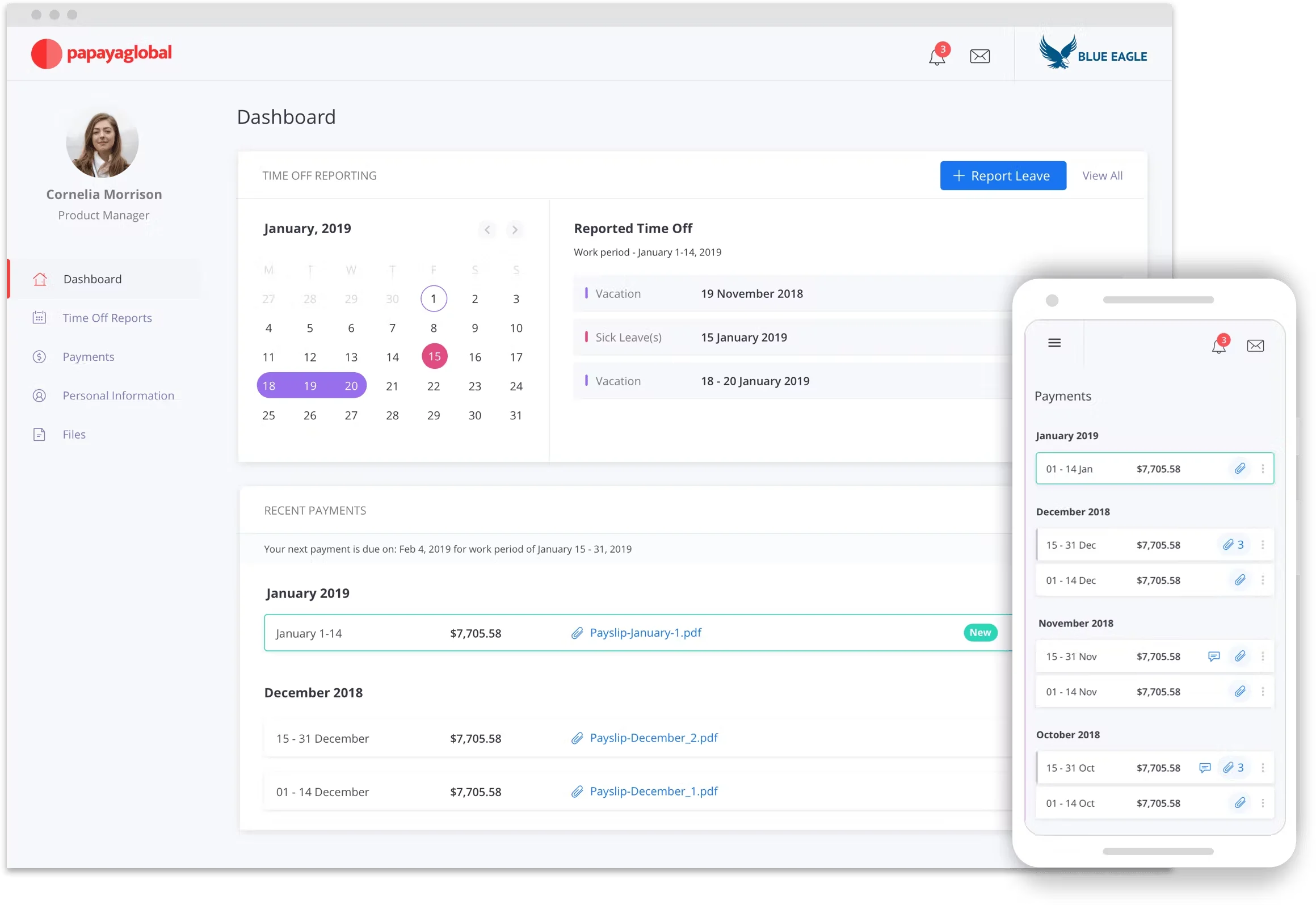
Automating payroll compilation improves team productivity and efficiency and saves considerable time. Not to mention that digitally filed documents are easier and faster to complete, manage and retrieve. You can speed up your HR processes using software as monday.com or deel.
Talent Acquisition Software
Back to candidate tracking (Application Tracking System), software that integrates the various social media used makes it possible to manage ads and career pages on different bulletin boards and websites through a single platform.
Obviously, automated CV analysis, instant candidate screening, and interview scheduling functions significantly reduce the workload of recruiters. Communications, reminders and other typically administrative aspects are fully automated, reducing personnel-related costs as well.
SmartRecruiters Talent Acquisition Suite, for instance, is designed to increase recruiter productivity, foster hiring team collaboration, and enhance the candidate experience from source to hire. Other interesting software you should try are Workable and Freshteam.
Cloud technologies
Even the HR management department cannot avoid cloud computing, as personnel selection procedures are now carried out online. It means being able to rely on a pre-selection platform, centralize data and facilitate access, organization, and management of procedures.
Candidate and employee information is brought together in a single space, streamlining time and communication between company departments. HR units that adopt cloud improve communication and transparency. This is reflected in the attitude of employees, who are increasingly inclined to develop a trusting relationship.
As I also explain in the guide on Digital Tools & Innovation Resources, the best and most widely used software for file sharing and online storage are Dropbox, OneDrive and Google Drive.
Gamification techniques
This is a very modern trend, based on the study of Game Thinking processes and the application of typical game dynamics in work contexts. The use of playful techniques by the Human Resources team improves motivation and collaboration. Puzzles and themed games can also be used to test whether candidates are able to adapt to the company’s culture, values, and environment, as well as to assess the speed and effectiveness of cognitive processes.
A smart move would be to introduce a completely original game that becomes a peculiarity of your HR department and stands as an example for other companies. For example, that’s what Deloitte did, launching the “Chosen Analyst” game for new coming analysts. By making players save the world from zombies, the game helped HR save costs on employee onboarding and reduce time-out-of-market for new hires.
Or, again, in 2015 Domino’s pizza released the Pizza Mogul game. Participants had to ideate their pizza recipes and earned money for every order of their creation. This way, Domino’s managed to engage with their audience, boost their employer brand, and took note of potential hires’ creative side. Indeed, the company even hired “designers” whose pizzas were ordered the most.
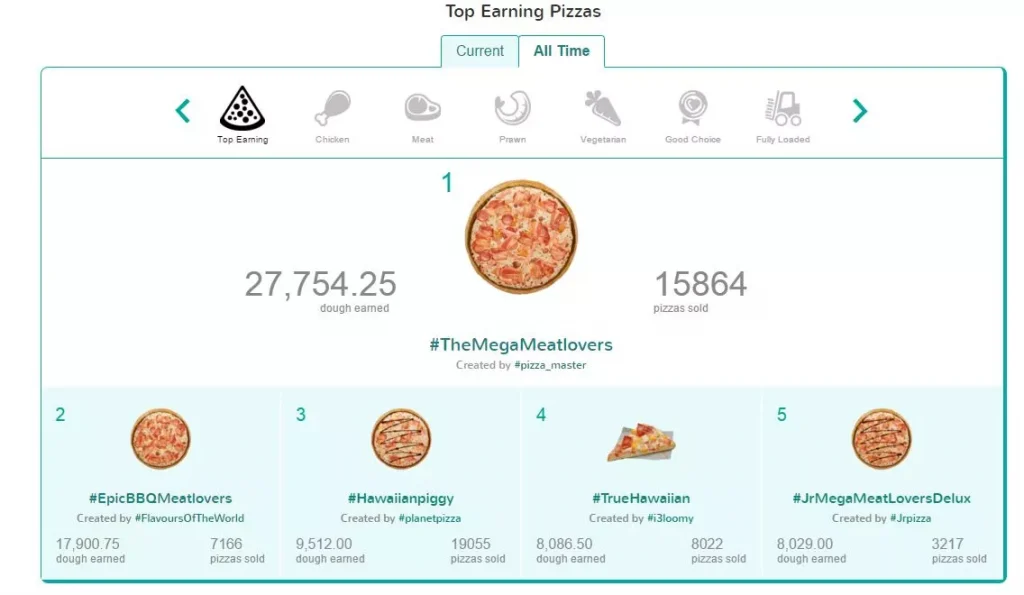
Who is the Digital HR Manager?
Digital Transformation in the HR department is a complicated and gradual process that necessarily needs guidance. Within this framework, the Digital HR Manager stands as the person in charge of Digital HR Transformation, takes control of it, and promotes a change-oriented culture.
Typically, it is a role filled by a professional who has specialized in more technical paths, gained years of experience in corporate HR management, and now seeks to institute innovation by introducing design thinking strategies, new ways of working, digital platforms, and innovative tools.
In short, the modern HR leader must be a thinker and a technology expert, but also agile and astute enough to be able to deal with an increasingly restless workforce. Their main focus is on the digitalization of HR processes when it comes to recruiting, training, evaluation, employer branding, employee retention, and employee education.
But that’s not all. The Digital HR Manager also:
- • creates and supervises digital teams to manage staff in dynamic and innovative environments
- • fosters social relationships and innovation in the company
- • sets conditions to create a stimulating workplace that promotes productivity while boosting social relations, with the contribution of technology
- • digitalizes selection processes by implementing tools that facilitate onboarding of new hires, virtual interviews and remote testing
- • optimizes internal communication
- • selects payment management software (Payroll Software), Talent Management Software and Learning Management Systems (LMS) best suited to their company
- • manipulates People Analytics (or HR Analytics) and uses data, statistics and analysis to bring to life studies and predictive models of human behavior in the company
an analytical methodology
HR Analytics: what is it, how it works, and how it will help your business
Every typical HR department process I mentioned earlier – but also, for example, talent attraction, retention, and development – is more likely to succeed if it is managed with the support of real data. Digital Transformation requires decision-making processes supported by objective data before driving a strategy and achieving certain results.
People Analytics (or HR Analytics) is an analytical methodology that provides quality evidence useful for making organizational decisions related to a company’s human capital. It means taking data from employees and analyzing it in a complex way to start an objective and strategic decision-making process. And in a digitalized HR department, People Analytics supports professionals at every stage of personnel management: in recruiting, performance evaluation, compensation planning, and training paths. The ultimate goal is to foster the career development of individual talents and maintain a high level of employee satisfaction.
Benefits of People Analytics
Objective employee analysis includes systems for collecting data on personal characteristics, behavior, and interpersonal relationships to develop predictive models and make business decisions. Such a strategy enables Digital HR managers to make good personnel management decisions through statistical calculations, thereby improving the performance of the entire company. It will thus be able to answer key questions such as:
- • Which factors attract talent to the company and convince them to stay?
- • Which personality traits of candidates make it possible to distinguish a successful future leader or innovator?
- • Which profiles are at the most risk of leaving the company?
- • Which employees are the least likely to follow corporate alignment?
It is an investment that allows you to get a three hundred and sixty degree picture of the organization and make decisions following a threefold timeline:
- • By focusing on the past, you will know what happened, how and why.
- • By paying attention to the present, you will know the current situation and can possibly set up alert systems to know, for example, the risk of absenteeism or rotation within a team and take immediate action.
- • By looking to the future, you will be able to anticipate possible events due to certain actions. This is what predictive analytics and prescriptive analytics are all about, recommending moves to prevent certain phenomena or achieve certain goals.
However, the most important attitude to start a People Analytics project is to begin with a very clear focus on what you want to know, get, and predict from the analysis that will be performed.
Why should you apply People Analytics strategies?
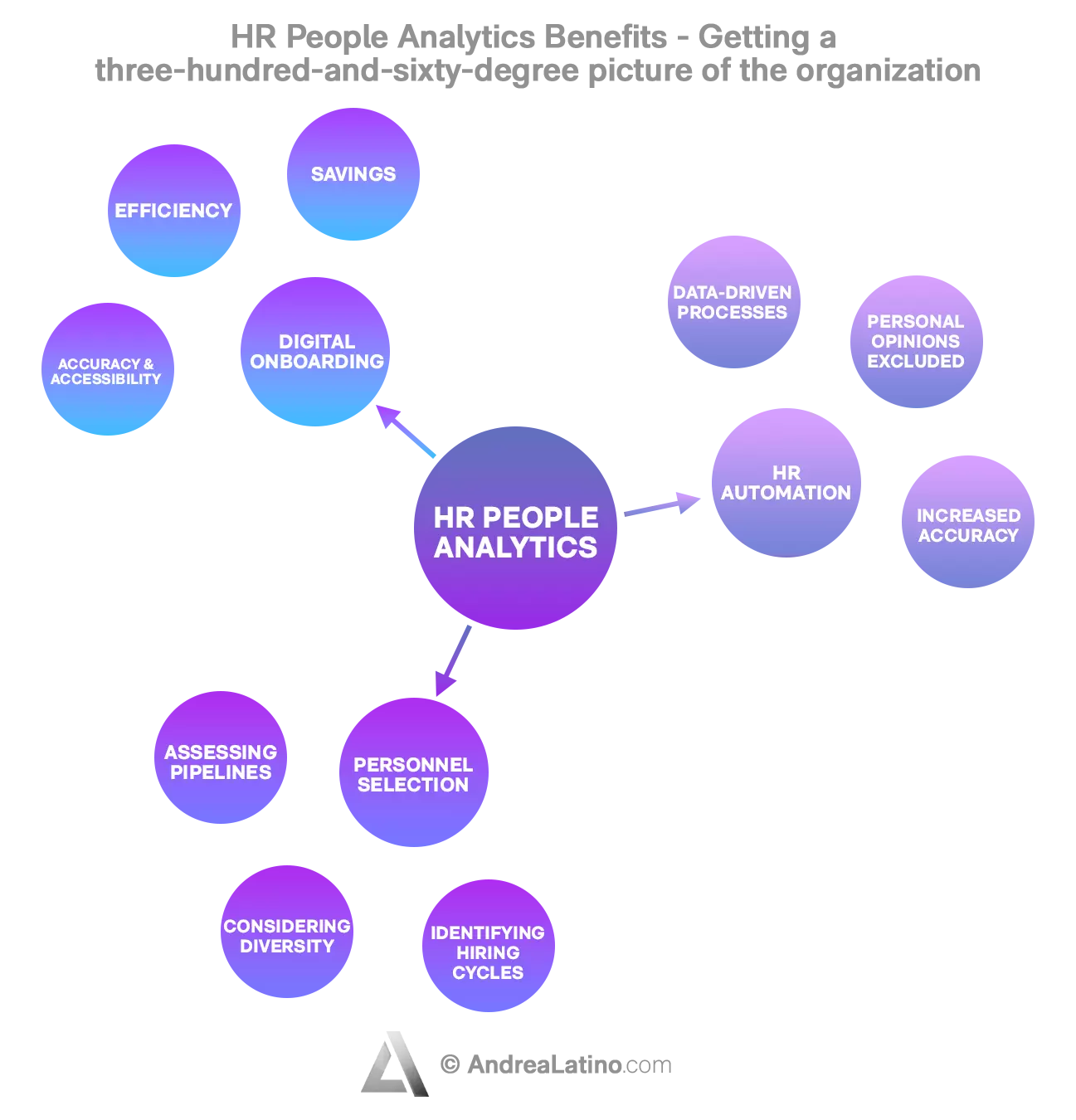
We have realized that the HR sector represents a rather reluctant area in adopting technology in working life. One of the main reasons is related to the higher consideration of personal perceptions over quantitative and objective sources. But natural biases can pollute strategic workforce decisions.
HR Automation
By introducing People Analytics processes, personnel management becomes data driven and can exclude any personal opinions or preconceptions harbored by HR employees. They also will benefit, as they will no longer have to waste too much time in conducting surveys or other types of manual inquiry. Everything is digital: accuracy increases, errors decrease.
Automating data collection and management means optimizing tasks and activities, improving efficiency by relieving employees from performing manual tasks and allowing them time to focus on the tasks of major importance. In short, the ability to have objective information at your fingertips is an added value of Digital Transformation.
Personnel selection
People represent an organization’s most valuable resource. As a result, the process of recruiting new employees must be as accurate as possible and must lead to a choice that brings value to the company, enriching it in terms of human capital.
The importance of people must be the awareness that drives the hiring process to avoid making bad decisions. HR Analytics supports recruitment, reducing costs and time needed in the search stages. It also deals with:
- • assessing pipelines for acquiring top talent to invest with foresight and optimize recruiting
- • identifying hiring cycles to decide when to activate the search and when to loosen it
- • analyzing market rates to recruit and retain the most promising workers
- • considering ethnic and gender diversity among employees to provide equal opportunities for all
Digital onboarding
Once the selection process is concluded, the company must worry about introducing the chosen candidate to their new jobs through training programs. Yet, employers often do not have enough time to devote to new hires. And here comes digital onboarding, another benefit given by the application of technological tools to HR procedures.
Digital onboarding allows the business owner to receive support in the training process of newcomers. It is carried out completely online and can continue even after the initial setting phase, to keep track of the employee’s progress and soft skills acquired. And the concrete benefits do not end here.
Efficiency: the onboarding process becomes much faster and remains constantly accessible. In addition, the manager can have all the necessary information at hand in one place, avoiding the review of paper sheets. And the process can begin even before hiring (Employer Branding), thus burning out the stages.
Accuracy and accessibility: all necessary information is kept within a large digital document manager and can be checked and updated at any time and from anywhere. Onboarding software, then, often makes it possible to recover lost data, giving increased security to the business system.
Savings: on costs and personnel employed in one-to-one training. This allows the company to simultaneously invest in other strategic areas.
Communication strategies
As anticipated, the recruitment process often begins before actual recruiting. Employer Branding actions are a must-have for the contemporary digitalized company: these are the set of communication strategies aimed at promoting the brand.
They often pair with employee advocacy programs so that resources already in the company act as spokespeople for their employer. After all, introducing potential candidates to an inviting image of yourself is no small advantage.
Recruiters themselves, in their communicative relationship with candidates, have to take care of spreading a certain image of the company and nurturing its reputation. The purpose of Employer Branding is to communicate the company’s distinctive features from a professional and job-related perspective.
The goal of Employer Branding is to acquire talent and keep those already hired in the company. So how can the Human Resources department implement the company’s Employer Branding tactics?
- • Identifying the most effective communication channels for promoting online and offline events (such as trade fairs or career days), spacing between print, website, and social media.
- • By creating ad hoc content and choosing the people who best represent the company’s values from among the most charismatic employees – so-called “brand ambassadors”.
- • Through web reputation management and monitoring.
How does Candidate Experience change?
Today it is now common practice to search online and offline for information about the company to which one is about to send his or her resume, in order to first get a clear idea: in a market where skills are lacking, it is often the candidate who selects the company. They read comments on forums, reviews, or simply ask the opinion of those who work there or have worked there.
Here, taking care of the Candiate Experience pathway (the opinion that arises in job applicants about the company’s recruiting process) must begin with protecting the brand from possible attacks: it means leveraging online reviews to improve your own shortcomings, getting the right news circulating at the right time, conveying the desired image.
The importance of Candidate Experience today has significantly increased, as each review invades a huge user base – from social networks to websites such as Glassdoor or Indeed – and affects corporate reputation. It is the HR staff’s job to nurture the Candidate Experience in order to improve it and get positive feedback.
Some issues to consider
Today’s companies must adapt to the renewed demands of current times. The last two pandemic years have shown us how the present and future of work is increasingly agile and digital: organizations need to be active on social, attractive on job search platforms, and they need to take care of their reputation starting with staff and stakeholder communications.
Two rather relevant macro shifts should be considered:
1) candidates tend to no longer blindly trust what companies say about themselves (hence conducting research)
2) the use of smartphones, which have become the primary devices, makes the design of digital touchpoints and an optimal user experience crucial
The logic of employment today is the opposite of the past: it is not the company that chooses the person to be hired but the latter that screens the most suitable positions for their values and priorities. And they are quite unprecedented priorities: many people increasingly consider the purpose of the company, or the expected social commitment (especially in terms of environmental sustainability), to be more important, or they consider space for private life more valuable than a high salary.
How to promote the ideal Candidate Experience
To sum up, technology supports change in the way recruiting is done to enable companies to attract the best prospects and build a great brand reputation. We need to veer toward a simple and satisfying hiring process. The candidate must be able to speak well of the company even if he or she is not hired. Below I will give some suggestions for conveying a positive recruiting experience:
• Remember that the journey begins long before the actual application, so even word of mouth (especially digital) will have the positive effect of attracting new talent. From the candidate’s point of view, then, the search phase should begin with a clear and easy-to-find career page on the website, or social networks.

• The application process should be concise and transparent, and the job description should not be misleading with respect to the duties to be performed. Glickon Job Description generator is, for example, a cutting-edge solution that in less than a minute allows you to produce the perfect Job Description from few simple keywords. Yes, GPT-3 has a hand behind it. Social and job search portals today offer the opportunity to streamline the process by asking for just a resume and little data entry, which helps not to discourage job seekers.
• At the interview stage, then, the candidate should be “wooed” (in a professional way!), trying to make him or her feel comforted and respecting the expectations of those in front of you. It would always be best to arrive prepared, having already read the resume, in order to focus on the most interesting aspects and experiences of the person.
• The person conducting the interview should provide all the useful information about the company and the position offered, conveying a feeling of transparency and letting the candidate speak (have him or her tell whatever he or she feels is appropriate, and perhaps keep a space for some questions).
• To avoid damaging the company’s reputation, a very good idea would be to communicate the outcome of the selection process, whether positive or negative, to all candidates. Even better if it is accompanied by feedback – a large proportion of people resign themselves not to receiving any feedback after an interview in case of a negative outcome. The candidate should never be left to his or her own devices, but accompanied in an ongoing dialogue.
Let’s talk about welfare
Corporate welfare: what is it and why is it important for Human Resources
A corporate culture that puts people at its center must be concerned with creating a healthy work environment that preserves the wellbeing of employees. If people feel comfortable, they will develop an optimal relationship with the company they work for and help improve its brand image.
And this is where the most up-to-date HR departments come in, in line with the Digital Transformation that is changing organizational models and business processes. HR is moving toward the adoption of corporate welfare models, i.e., that set of benefits designed for the employee with the aim of improving their wellbeing and quality of life.
Why apply corporate welfare?
By shifting the focus to the individual, the aim is to increase their productivity in a positive, non-oppressive work environment. Thus, the company also benefits chain-wise:
- • if employees’ motivation and satisfaction increase, there will be a better business climate
- • if employees are satisfied with their employment, they will help boost the brand image and reputation
- • if the company has an excellent brand reputation, it will not struggle to attract high-level candidates
- • a serene place that promotes collaboration will decrease absenteeism, risky behavior and stress
- • finally, even the tax burden for companies and employees will be reduced
How to implement corporate welfare?
Welfare and corporate benefits are crucial in showing closeness and appreciation to employees. So let’s take a look at some of the initiatives put in place by Italian companies:
- • the installation of welfare platforms makes it possible to independently manage services and benefits made available by companies
- • the variety of services that the worker can enjoy outside the work context is increasingly wide
- • meal vouchers are “flexible benefits” (obtained through company or territorial agreements) that are highly appreciated and immediately activated, and there are no regulations that prevent their recognition for smart working employees
- • vouchers are other versatile tools through which companies can reward performance (lowering the tax wedge compared to payroll disbursement of productivity bonuses) and easily meet contractual welfare provisions
- • finally, employee welfare increasingly extends outside working hours through initiatives aimed at integrating private and professional life
dematerialization of workspaces
Smart working, home working and hybrid work
The global pandemic has forced us to expand the definition of “work environment”. The combination of fully remote, partially remote, and office-based work positions will lead to a profound redesign of organizational structures.
And according to managers and researchers, this setting will eventually give many workers the autonomy to choose how, when, and where they work. HR departments will therefore have to take a practical approach and remember that dematerialization of workspaces has been promoted by most consulting firms for years.
Defending an office-based approach only because most employers (especially intermediate employers) perceive it as more complex risks misaligning the company on two fronts: business and labor market.
Thus, HR professionals will have to sustain the search for the right sharing tools and give support to reorganizational decisions. And, as already deeply covered, they will have to revise their processes by making them more fluid, inclusive and digital. Finally, they will have to help managers move away from that outdated mindset based on presence.
A new phase?
We have seen how many companies have found themselves displaced by the need to make their organizational instances virtual as soon as possible. But one thing should not be forgotten: the concept of smart working was codified legislatively in 2017, which is long before the pandemic event.
And it doesn’t end here: “anytime & anywhere” work had already been adopted by many companies, in Italy as in the rest of the world, when there were still no laws on the subject. Moreover, Italy was among the European countries with the lowest diffusion of “flexible work” (having the lowest degree of time/space flexibility in the management of both public and private workers).
In short, we can call it smart working, home working or hybrid (the latter being the most popular term for the key feature of future work): either way it will indicate a “new” approach characterized by fewer constraints, greater empowerment, and more conscious use of resources.
The HR mission
Today, Human Resources managers face the challenge of creating propitious situations for the development of business ideas as well as social practices that combine the use of technology with solutions to improve work-life balance.
In recent years, we have realized how agile work can be a resource capable of motivating employees and increasing profits. Inevitably, it also presents several risks, such as alienation of human capital or estrangement among employees themselves (which is a disadvantage from the point of view of communication between departments in a company).
Therefore, HR management will have to foster the synergy between technology and humanity: keeping the contact between colleagues alive as if they were in the office by making use of the innovations provided by Digital Transformation. In order to do this, I recommend using:
- • software such as Zoom or Microsoft Teams for video conferencing
- • cloud-based software such as Dropbox, OneDrive, or Google Drive for enterprise data management
- • HCM (Human Capital Management) software such as SAP SuccessFactors
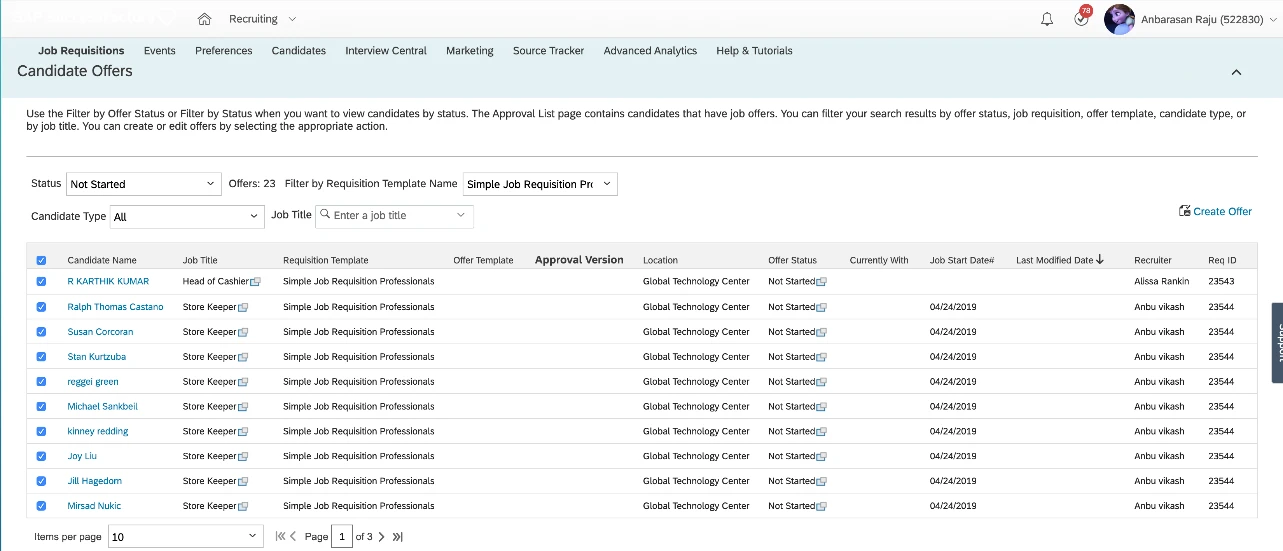
Future prospects for HR personnel
We will most likely witness the gradual replacement of the term smart working with the more democratic hybrid work. There will be a need to promote and experiment with unusual organizational forms that allow the coexistence of physical and virtual activities, individual and group activities, in-presence work, and remote work.
HR staff will face challenges that will require pragmatic skills:
• Promoting resources empowerment.
This will require promoting flexibility, autonomy, and collaboration. It will be inevitable to involve employees more and more in decision-making processes, empowering them and stimulating them to come up with proposals and solutions. In this way they will feel (and become to all intents and purposes) an active and integral part of the change.
• Integrating old and new generations.
Digital natives will obviously be familiar with the use of technological tools and will adapt sooner and better to a work environment different from the office. More mature generations, on the other hand, may experience initial disorientation within a digitalized and decentralized reality.
Managers will need to develop the ability to move in increasingly less physical environments and create engagement within online groups and communities. Employees, more and more autonomous in managing their own time, will need to share their schedules with managers and colleagues to foster better coordination.
• Avoiding social isolation.
Agile work cannot exclusively involve one-on-one activities: employee isolation could have psychological repercussions. HR will therefore need to ensure that employees use digital tools to maintain contact with the work team.
Lastly, many activities can be carried out remotely, but it is also true that spontaneous socialization (the one that takes place, for example, in front of the coffee machine) occurs mostly in person. And then, corporate spaces will have to look less like offices and more like meeting places.
Conclusion
Over the years, the workforce has evolved, and the HR function has shifted its focus from processes to workers. This is also thanks to Digital Transformation, which has revolutionized virtually every business sector.
Today, Human Resources struggles to secure top talent and understand the needs, desires, and motivations of a diverse, multigenerational human capital. Retaining and attracting high-performing people is increasingly difficult; the competitive and global work environment requires embedding change initiatives into business strategies.
It is necessary to adapt to an ever-changing world: leaders who are able to understand the growing value of a digitalized Human Resource management department will be able to boast a centralized overview that includes the company’s perspective as well as that of employees. And this can only ensure a competitive advantage.

An important message for you
Hi there! I hope you found this article insightful.
Allow me to introduce myself. I’m Andrea Latino, the author of this article.
I have spent over a decade earning the trust of world-class multinationals, institutions and startups for their digital and innovation initiatives.
Are you curious about my story and how I could help you?
See how I can help youStay in wonderland
Let me show you how deep the rabbit hole goes.
Here are more Articles & Guides:

Articles & Guides
Digital Communication: how to develop an effective one
March 15, 2023
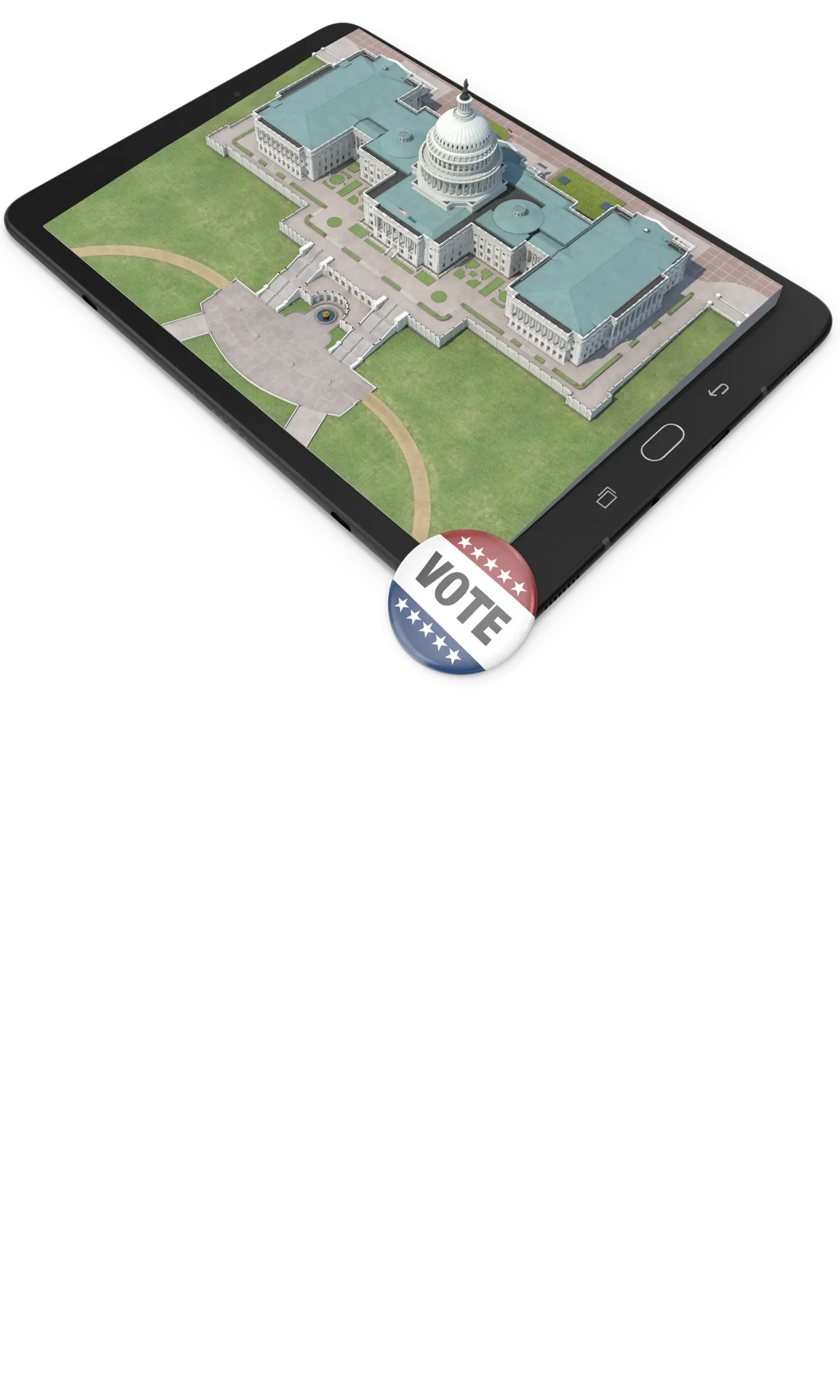
Articles & Guides
Digital Political Communication: doing politics in the age of social media
March 15, 2023

Articles & Guides
Digital PR: public relations in the digital age
March 15, 2023

Articles & Guides
Digital Public Affairs: how to employ effective institutional communication
March 15, 2023
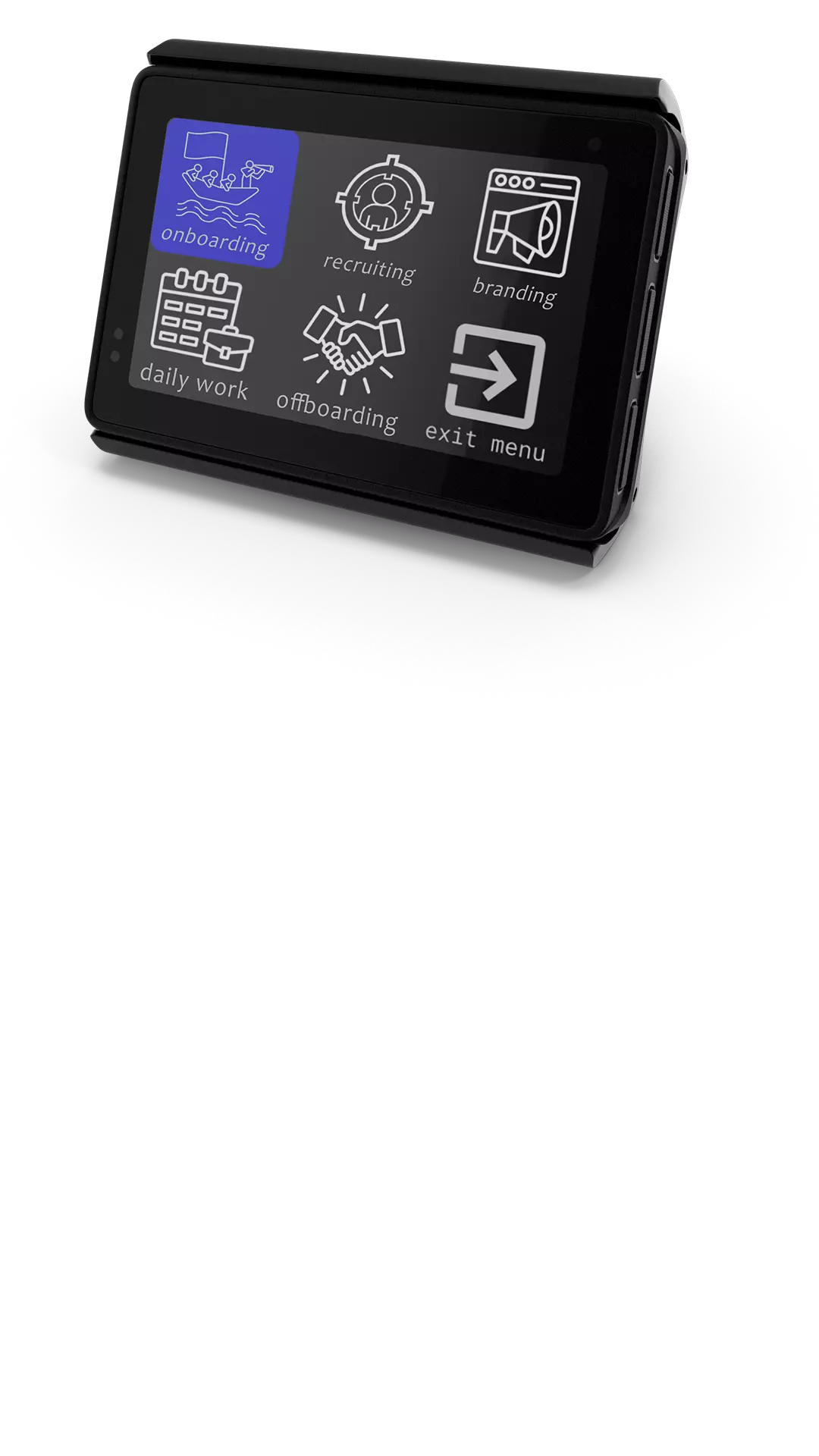
Articles & Guides
Digital Transformation for Human Resources: stages, tools and new skills
March 15, 2023

Articles & Guides
Editorial Plan: how to build a winning one
March 15, 2023

Articles & Guides
Employee Journey: how to track employee experience in 6 simple steps
March 15, 2023

Articles & Guides
Innovation Strategy & Innovation Management: best practice and examples
March 15, 2023

Articles & Guides
Digital Tools & Innovation Resources: the best sources for your innovation process
March 15, 2023

